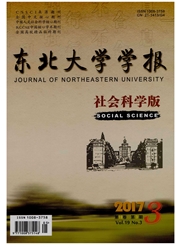

 中文摘要:
中文摘要:
根据1995——2009年27个省的面板数据,采用数据包络分析方法测算各地区的Malmquist全要素生产率的变化率,并通过非参数局部线性回归方法对地区经济的收敛性进行了实证分析。研究结果表明,我国尚处于技术含量低的粗放型经济增长阶段,经济增长主要由要素投入的增加拉动而非技术进步驱动;西部大开发战略显著提升了西部省份的效率水平,但相比东部省份仍然较低;1995——2009年地区效率水平呈俱乐部收敛,且效率水平的收敛具有明显的阶段性,“九五”期间效率水平差距扩大,“十五”期间呈β收敛,“十一五”期间收敛不显著。
 英文摘要:
英文摘要:
The regional Malmquist indexes were measured by adopting the DEA approach based on the panel data of 27 provinces in China (1995--2009), and the regional economic convergence was also empirically analyzed by using the nonparametric local linear regression method. The results showed that China is still at the stage of extensive economic growth, whose technological content is low. Its economic growth is promoted mainly by the increase of element inputs rather than technological advances. The West Development Strategy has significantly increased the efficiency of the western provinces; however, their efficiency level is still lower than that of the eastern provinces. There exists a club convergence in the regional efficiency between 1995 and 2009, and the convergence has also taken on several obvious stages. The regional efficiency gap widened during the ninth five-year plan period and the regional efficiency took on β convergence during the tenth five-year plan period, but the convergence was not significant during the eleventh five-year plan period.
 同期刊论文项目
同期刊论文项目
 同项目期刊论文
同项目期刊论文
 期刊信息
期刊信息
